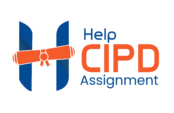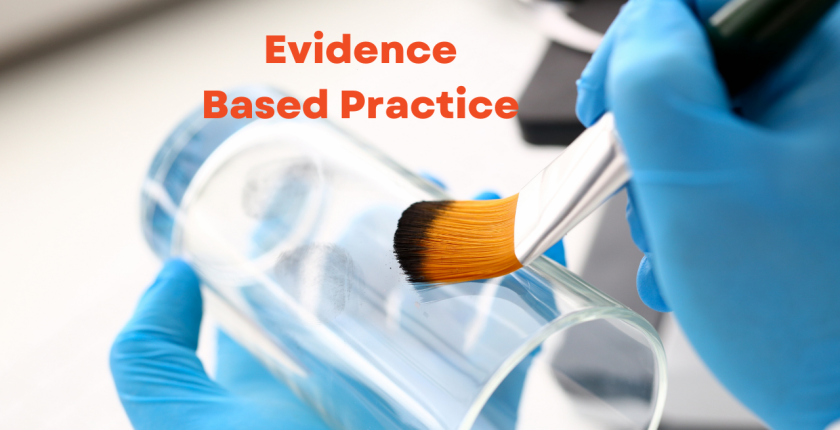This unit aims to provide learners with an understanding of the use of quantitative and qualitative data to provide evidence. There is substantial evidence in favour of improving decision-making and appropriateness in promoting organisational success and development. An effective decision-making process at work improves people practices and results in more excellent organisational value.
Table of Contents
Learning outcomes
Learners will be able to understand;
- An application of evidence-based concepts and learning about the tools used to diagnose challenges and opportunities.
- Understanding ethical thinking and assessing how moral views will affect decisions.
- Various insights and methods will be covered, and you will be able to measure the benefits, risks, and monetary implications of solutions aimed at rising populations.
- People practices contribute to analysing findings and analysing data systems that lead to better organisational decision-making.
The purpose of this unit is to help learners understand;-
Critical thinking and decision-making strategies for effective decision-making
Evidence-based practise provides students with the opportunity to evaluate ideas used in practice. The learners will be able to apply these ideas in their practice of decision-making. Practical thinking, reasonable evidence, and justifiable decisions are the principles for achieving evidence-based practice. Various decision-making models exist, including rational models, individual vs team decision making, bounded rationality, group polarisation, and groupthink. During this course, learners are introduced to the concept of evidence-based practice. In practice, this refers to professionals’ roles in selecting evidence and interpreting it and conducting practical analyses of organisational solutions and issues. In the critical review of theories and opinions, students analyse evidence from various sources, develop their arguments and conclusions, and test them.
Through this course, learners learn how to analyse organisations utilising a variety of tools and methods. Students will learn how to apply them to identify problems, challenges, and opportunities within an organisation. In human resource management, there are different analytical tools used. Porter’s five forces analysis is an example of an environmental analysis tool used mainly to assess an organisation’s competitive environment. Primarily, force field analysis is used to identify the root cause of a problem and take action.
Learners gain insight into the strategic review, which identifies opportunities for value creation in an organisation, and future state analysis, which defines the organisation’s vision. Additionally, students will learn about Ansoff matrix analysis, fishbone analysis, root cause and effect analysis, critical situation analysis, balanced scorecards, target operation analyses, and McKinsey 7S. Participants will learn how various methods are used, such as conducting interviews, reviewing job descriptions, filling out questionnaires, conducting observations, sampling work done, examining organisational metrics, and comparing with other organisations.
In this unit, we examine the principles of critical thinking. They will be able to apply this to their ideas and other people’s ideas. In addition to reasoned argument or objective, rational thinking, the principle of critical thinking may also entail questioning the validity of sources of evidence and recognising conscious and unconscious bias. Students will understand how ideas from themselves and others can be applied when making decisions. The students are exposed to different methodologies and approaches and are taught how to apply clarity in their expressions and distinguish between real and hypothetical situations. As a result, students learn to create awareness of personal issues and rumours, not presuppose information, and evaluate incomplete and twisted information.
The student gains insight into ways in which various ethical perspectives can influence decision-making. Students will gain a better understanding of ethical perspectives and theories such as communitarianism and utilitarianism. Fairness, democracy, honesty, and equality will be taught with ethics and business, ethical dilemmas, and results.
Participants will learn about decision-making influences, ethical dilemma examples, and expected outcomes. They learn how different opinions can influence certain decisions, how to deal with capability-based and performance-based issues, ethical values, compassionate and punitive responses to work, and the impact of ethics on leadership style, management, and organisational culture.
Impact of effective decision-making on solving people practice problems
In this course, learners learn how to interpret analytical data using the appropriate tools. In this lesson, learners will learn how to interpret raw data gathered from analysis, such as the patterns, the root causes, the effects, the trends, and any additional questions or themes.
As a result, students learn how to analyse all relevant evidence necessary for recognising key insights into people practice issues. Students will develop an understanding of all the evidence obtained from statistical data and evidence from records of error, complaints, and documentation processes. In addition, they learn more about evidence from unmet requirements, such as consultation outcomes, change and need analyses, critical path analysis outcomes, and the views of affected parties.
The students learn how to use various decision-making processes to identify a potential solution to specific issues in people practice. These decision-making processes are future stride, formulation of problem outcomes, action learning approaches, and ideal situations.
Solutions are assessed based on their financial implication, benefits, risks, and risks in the unit. Among the benefits learners will learn are improved productivity, enhanced customer engagement, goals and objectives achieved, improved metrics, improved organisational awareness, and improved financial and learning and development data.
Impact and value of people practice in an organisation.
Through this learning objective, learners will be able to identify various ways organisations measure financial and non-financial performance. Gross and net profit, organisational cash flow, business revenue, business investments return, organisation productivity, organisation scorecard, major performance indicators, legal compliance, shareholder benefits, customer feedback, and legal service agreements are included.
The unit examines the significant systems and data generally used to advise people about their performance estimators and work measurements. In addition to charts and tables, graphs are used to present and analyse the data. The students learn how to analyse qualitative and quantitative data and present the results in business reports. Furthermore, they understand the importance of organisation briefings, performance calculations, HR systems and specific datasets, such as recruitment data, compliance data, reward data, learning and development data, and financial data.
By participating in people practice initiatives and activities, participants gain insight into collecting significant discoveries for shareholders. The learners gain an understanding of how the key findings are collected. They will become familiar with the formats used to present results, evaluation, and data. Graphs, diagrams, tables, charts, and stakeholder interest reports are examples of such formats. Furthermore, they will learn people practice activities such as recruitment exercises, change initiatives at work, recruitment exercises, and learning and development initiatives.
Through various methods, learners learn how to assess the value and importance of people practice. By the end of this course, learners will be able to: define and explain the concept, impact, and value of people practice; explain how people practice adds value. The impact of people’s practices can be positive or negative, short-term or long-term, direct or indirect. Throughout the course, learners will be able to comprehend the various reasons for measuring value and impact. Among them are the following: ensuring that the people practice contribution is high; ensuring all organisational goals and objectives are met; justifying the people practice spend; identifying future needs; allowing informed decisions; identifying any gaps, and continually improving people practice activities. In order to do so, various methods can be utilised, such as evaluating using evaluation models and methods, analysing scope and criteria, using evaluation tools such as data and surveys, sorting information and gathering evidence, doing a cost-benefit analysis, and validating the evaluation.
Get detailed information on:
2 Comments
Comments are closed.




Having worked with this team three times now, I can recommend their service to anyone. I appreciate your excellent service.
Thank you Kristine. We are happy to work with you.